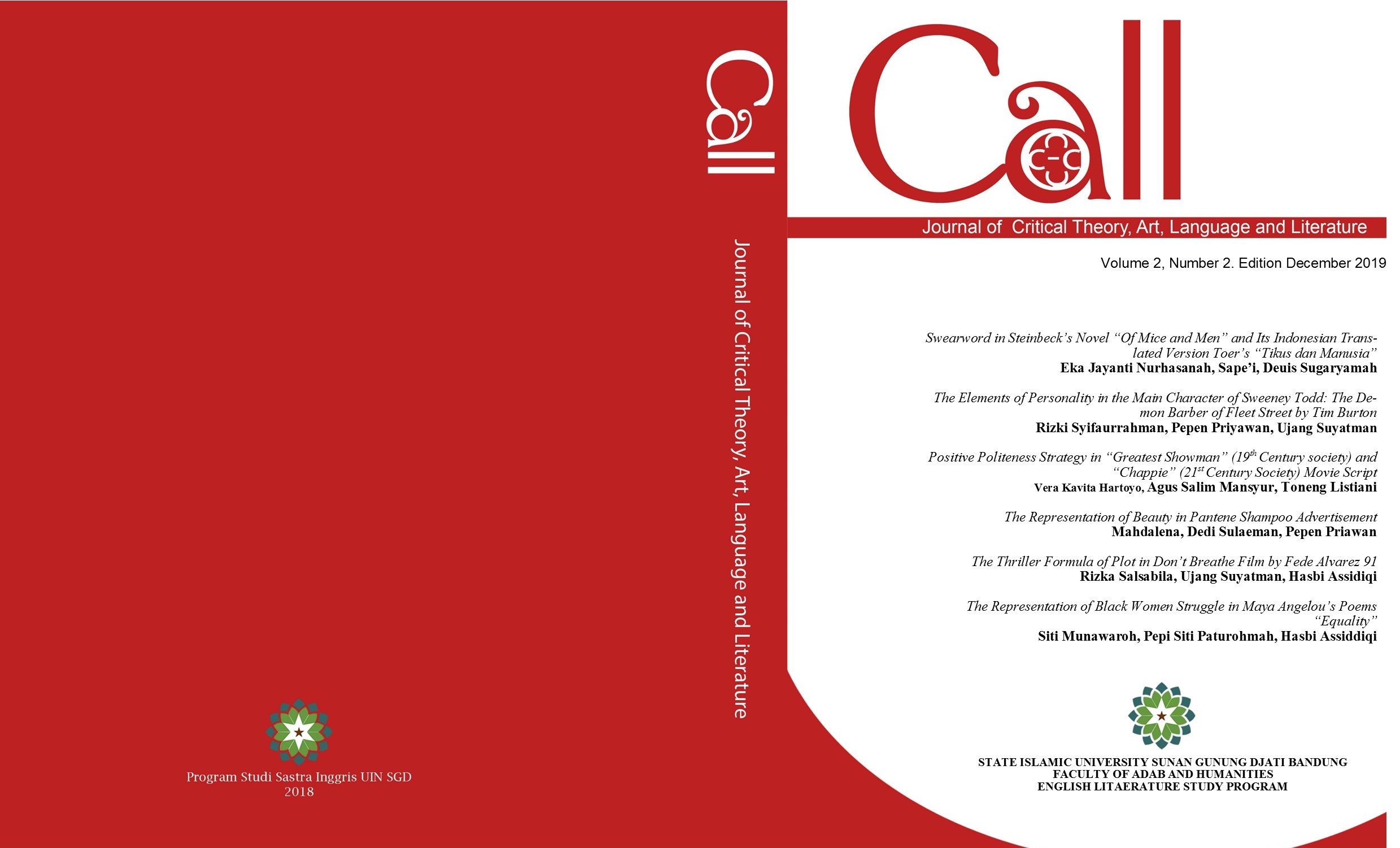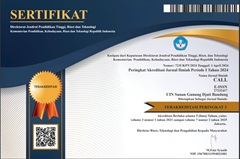THE THRILLER FORMULA OF PLOT IN DON’T BREATHE FILM BY FEDE ALVAREZ
DOI:
https://doi.org/10.15575/call.v1i2.6514Abstract
This research is about Thriller Formula of Plot in Don’t Breathe film by Fede Alvarez. The objectives of this research is to describe how is the thriller formula explain through plot in Don’t Breathe film. The method use in this research is structuralism method. Then, the object and the source of data in the film Don’t Breathe by Fede Alvarez, which was published in 2009 and the duration consists of 1 hour 28 minutes. Based on the findings and discussion, the writer concluded thriller formula can be seen through plot. In this research, the researcher finds thriller formula through plot consisting of complicated stories, frequent plot twist, violence, emphasis story on action and conflict, the protagonist triumphs over evil and survive and suspense. The result of the analysis shows that there are 40 data of plot. The implication of this research is to give understanding to the readers especially focused on the thriller in order to improve the ability of learners and readers in understanding literature. Expectantly, this research can give many benefits for the readers and all of students of English Literature to learn more about thriller.
Key words: Don’t Breathe, thriller, thriller formula in plot.Downloads
Additional Files
Published
Issue
Section
Citation Check
License
Authors who publish in CALL agree to the following terms:
- Authors retain copyright and grant the journal right of first publication with the work simultaneously licensed under Attribution-ShareAlike 4.0 International (CC BY-SA 4.0) License that allows others to share the work with an acknowledgment of the work's authorship and initial publication in this journal.
- Authors are able to enter into separate, additional contractual arrangements for the non-exclusive distribution of the journal's published version of the work (e.g., post it to an institutional repository or publish it in a book), with an acknowledgment of its initial publication in this journal.
- Authors are permitted and encouraged to post their work online (e.g., in institutional repositories or on their website) prior to and during the submission process, as it can lead to productive exchanges, as well as earlier and greater citation of published work (See The Effect of Open Access).




